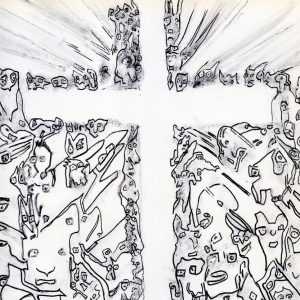Woodwose

“Woodwose” is a collection that looks at the Woodwose, an archetypal figure representing untamed, natural instinct and spirituality. The preface describes the Woodwose as a wild, hairy creature living in the woods, embodying ancient Greek ‘thymus’ or spiritedness. It suggests that modern society’s suppression of this wild, natural aspect leads to imbalance and spiritual sickness. The Woodwose symbolises a connection to nature and instinct, contrasting with society’s emphasis on science, rationality, and materialism.
The literary style of “Woodwose” is varied, encompassing both prose and poetry, with themes revolving around nature, spirituality, and the human psyche. Poems like “Since I’m addicted to you,” “Pericles,” “The Night we met,” and others, explore intense emotions, spiritual reflections, and a profound connection with nature. These pieces often juxtapose human experiences with natural elements, suggesting a deep, intrinsic link between humans and the natural world.
The collection frequently touches upon themes of love, struggle, transformation, and the pursuit of spiritual enlightenment. Poems such as “What was once unhealed was disclosed,” “How to look forward to the rocky bluff,” and “Your indwelling spark from the third heaven speaks,” reflect on personal growth, inner conflicts, and the journey towards spiritual awakening.
“Woodwose” also incorporates elements of folklore, myth, and symbolism. For instance, poems like “Remaining in the land of sorrow” and “Is this the young man’s shortest precept?” use imagery and allegory to convey complex emotional and spiritual states, often blending the mystical with the everyday.
The collection’s tone ranges from contemplative and introspective to passionate and intense. It invites readers to consider deeper aspects of existence, such as the balance between nature and civilisation, the inner wilderness of the human psyche, and the pursuit of truth and authenticity in a materialistic world.
In summary, “Woodwose” is a rich, multifaceted work that combines poetry and prose to explore the theme of the wild, natural self versus societal norms and constraints. It offers a profound reflection on human nature, spirituality, and our connection to the natural world, encouraging readers to embrace their inner Woodwose – the untamed, instinctual part of themselves.
Harry Matthews
un poète et peintre
